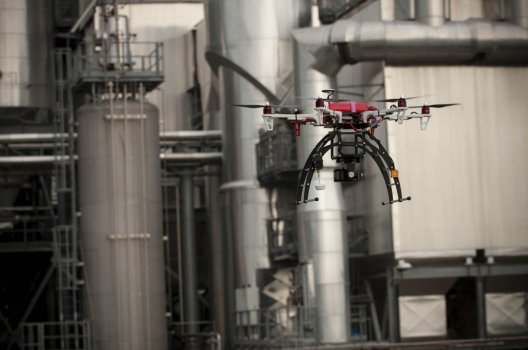K
Kathleen Martin
Guest
Construction companies today grapple with a number of factors that can potentially impede productivity and make it more difficult to compete for business. Managing labour shortages, cost pressures and environmental regulations make it hard to remain competitive in an ever-evolving industry. Before the COVID-19 pandemic, the industry was starting to experience a shift towards technology as a way to drive greater productivity. As we begin to move past COVID, technology is playing an even more important role in addressing the challenges of improved efficiencies on jobsites and across the business.
Drone technology is changing the industry. A decade ago, the average construction company could not afford to purchase or operate a drone; the cost of gathering aerial data and imagery was too high compared to traditional methods, and there was the technical expertise and time required to understand and analyze the data. Today, ease of use and affordability has made drones far more accessible.
Drone technology is advancing very quickly across multiple industries, helping companies monitor and track progress in a way never before possible. From site surveying to tracking equipment and data, drones are mapping areas and gleaning information in less time and at a lower cost than manual mechanisms.
Driving innovation across industries
Drones offer a range of possibilities for the future of mapping, surveying, inspection and data gathering. From agriculture to environmental monitoring and conservation, drones are a multipurpose tool with the potential to revamp the way some industries operate.
Forestry companies are using drones to do inventory on logs and surveying vast, hard-to-reach areas at a fraction of the cost of a plane. Farms are deploying sophisticated drones with near-infrared and thermal sensors to monitor growth, pests and stressors in a field. They are being used to create aerial surveys of buildings, bridges, roads and highways – saving projects time and cost in the process.
Drones can enhance and, in some situations, replace manual inspections and maintenance inspections of high structures, even tightening a bolt on a bridge. The data collected can help plan maintenance of a structure and with thermal imaging, can also detect leaks and even identify compromised areas, giving companies the ability to proactively maintain facilities or structures.
Collecting valuable data and insights
Greater competition and increased accessibility in the drone manufacturing space has driven costs down to where they are more readily available and affordable to all businesses. And the benefits are numerous. To start, they can survey large areas quickly and easily and generate detailed 3D imagery of the project and surrounding area. This not only reduces cost, but the data can be used to navigate the site in 3D before construction starts. Access to greater data and insights can also create sophisticated maps, allowing for highly accurate measurements of distances/depths, surface anomalies, elevations and volumes.
Continue reading: https://www.reminetwork.com/articles/constructing-the-future-with-drones/
Drone technology is changing the industry. A decade ago, the average construction company could not afford to purchase or operate a drone; the cost of gathering aerial data and imagery was too high compared to traditional methods, and there was the technical expertise and time required to understand and analyze the data. Today, ease of use and affordability has made drones far more accessible.
Drone technology is advancing very quickly across multiple industries, helping companies monitor and track progress in a way never before possible. From site surveying to tracking equipment and data, drones are mapping areas and gleaning information in less time and at a lower cost than manual mechanisms.
Driving innovation across industries
Drones offer a range of possibilities for the future of mapping, surveying, inspection and data gathering. From agriculture to environmental monitoring and conservation, drones are a multipurpose tool with the potential to revamp the way some industries operate.
Forestry companies are using drones to do inventory on logs and surveying vast, hard-to-reach areas at a fraction of the cost of a plane. Farms are deploying sophisticated drones with near-infrared and thermal sensors to monitor growth, pests and stressors in a field. They are being used to create aerial surveys of buildings, bridges, roads and highways – saving projects time and cost in the process.
Drones can enhance and, in some situations, replace manual inspections and maintenance inspections of high structures, even tightening a bolt on a bridge. The data collected can help plan maintenance of a structure and with thermal imaging, can also detect leaks and even identify compromised areas, giving companies the ability to proactively maintain facilities or structures.
Collecting valuable data and insights
Greater competition and increased accessibility in the drone manufacturing space has driven costs down to where they are more readily available and affordable to all businesses. And the benefits are numerous. To start, they can survey large areas quickly and easily and generate detailed 3D imagery of the project and surrounding area. This not only reduces cost, but the data can be used to navigate the site in 3D before construction starts. Access to greater data and insights can also create sophisticated maps, allowing for highly accurate measurements of distances/depths, surface anomalies, elevations and volumes.
Continue reading: https://www.reminetwork.com/articles/constructing-the-future-with-drones/

